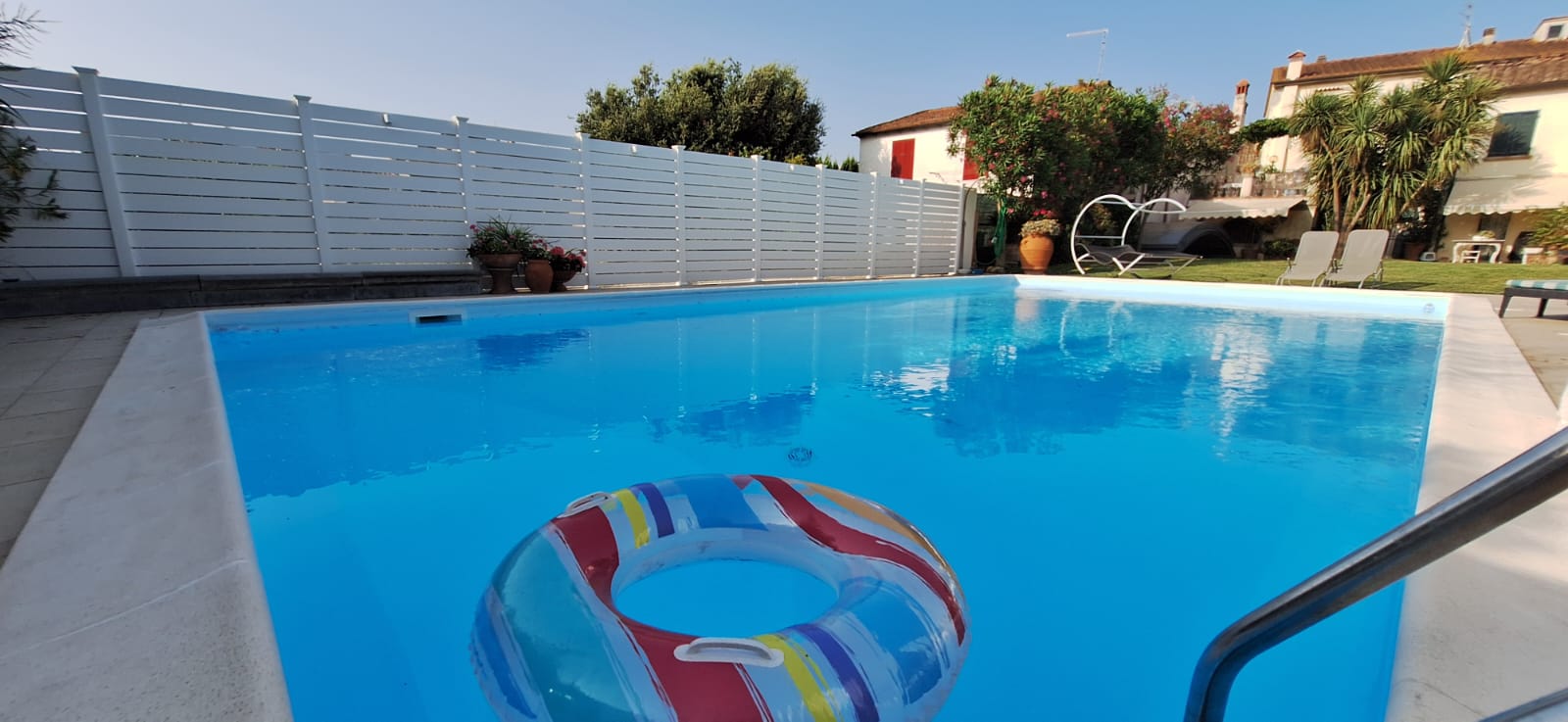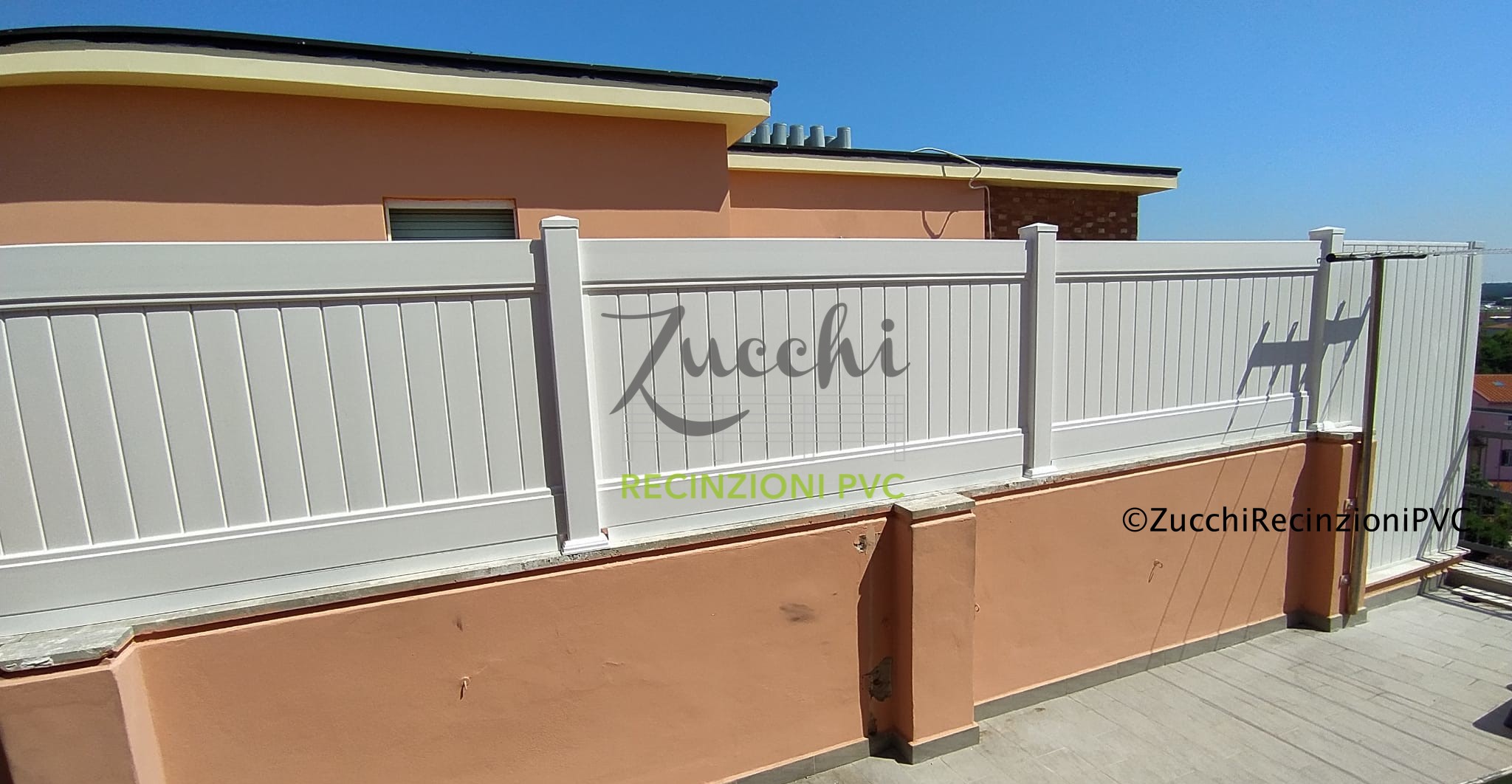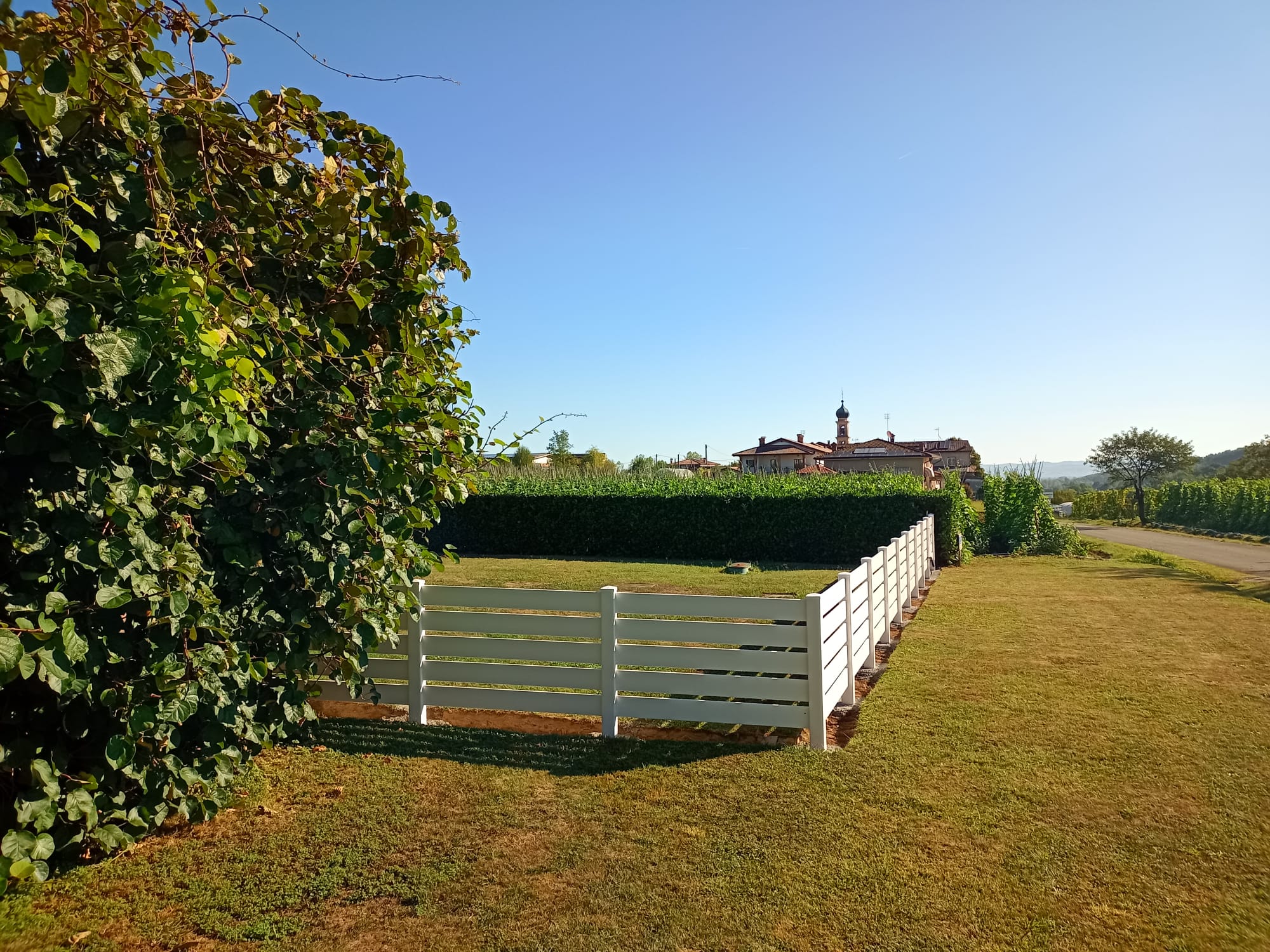Critical areas with direct sunlight and unsuitable materials: how to avoid them in your garden
In summer, your garden can become a little paradise… or a living nightmare if you choose the wrong materials! It’s not just about aesthetics—it’s also about safety and comfort, especially if you have small children or curious pets at home. Have you ever considered that the scorching sun could turn a fence or surface into a real hazard?
Don’t worry, there’s no need to call a landscape architect to fix everything—a bit of common sense, some smart tips, and the right choice of materials can go a long way. In this article, I’ll guide you through the most common critical areas in gardens exposed to direct sunlight and show you how to avoid them with simple solutions.
When the sun beats down: watch where and what you place
There are areas of the garden that, due to their exposure, become scorching hot during the central hours of the day, especially in summer. If that sounds like an exaggeration, try walking barefoot on a stoneware path or touching a metal railing at 2 PM in August!
The south and southwest areas are the most exposed, and in these spots, unsuitable materials can become dangerous. For example, iron overheats excessively, cheap plastic tends to warp or become sticky, and wood can crack or splinter—especially if it’s untreated.
A common mistake is placing children’s toys, fences, or kennels in these critical areas without proper cover or considering material durability. The result? Handles that burn, surfaces that crumble, and dogs seeking shade in unlikely places.
Materials to avoid (or at least use carefully)
Not all materials are your friends when the African heat arrives. Some may look good when first installed but become a problem in less than a season. Here are the ones to avoid or handle with caution:
- Dark metal: it enhances modern style but becomes scorching hot in the sun. Perfect for the grill, not for the kids’ fence!
- Cheap plastic: often not UV-resistant, fades within a few months, and can release toxic substances when heated.
- Untreated wood: it warps, cracks, and if wet and then quickly dried by the sun, becomes a splinter trap.
When choosing a fence, for example, you need to look beyond the appearance. A material like UV-treated PVC, with a wood effect, can be the ideal ally. It resists heat, doesn’t splinter, is non-toxic, and stays cool to the touch longer than other materials.
You’re not just choosing a structure: you’re choosing peace of mind. If your child leans on the fence while running, or if your dog jumps against it, you want to be sure there’s no damage or burns.
Simple solutions for problematic (and more livable) areas
The good news? You don’t have to start from scratch. Sometimes just moving, covering, or shading is enough. Other times, it’s enough to carefully choose where to use certain materials. Here are some simple tips to put into practice:
- Use PVC in areas most exposed to the sun: it is lightweight, durable, and doesn’t warp in the heat.
- Create natural shaded areas with climbing plants, outdoor curtains, or pergolas made of breathable fabric.
- Avoid dark colors on fences and outdoor play equipment: they attract and retain heat.
- Test surfaces with the back of your hand: if it burns, it’s not suitable for children or animals.
- Cover high-heat areas with light, matte materials that reflect the sun instead of absorbing it.
A little-known but super effective trick? Use tall pots, strategically placed plants, or PVC trellises to “break” direct sunlight on sensitive areas.
Children and animals: more vulnerable than us (and less protected)
Remember that children and pets don’t perceive danger like adults do. A child crawling on a hot artificial lawn or a dog leaning on a scorching fence don’t understand they’re risking a burn.
Also, animals, especially those with long fur, suffer greatly from the heat and seek relief exactly in the most exposed spots, like near walls or fences. If the material is toxic or overheated, they can ingest residues, burn their paws, or even suffer heatstroke.
Choosing a heat-resistant PVC fence, with rounded edges and a smooth surface, means protecting your loved ones every day, even when you’re not there to watch over them. It’s a small gesture with great value.
Fences that don’t warp in the heat: a summer without surprises
Summer heat is unforgiving, especially when it comes to outdoor materials. The garden becomes scorching, the play equipment burns, the dog takes shelter under the bushiest shrub, and you look at the fence with one thought: “Hopefully it holds up again this year.” If you’ve ever seen a fence bend, crack, or lose color at the end of summer, you know what we’re talking about.
Don’t worry, you’re in good company. But the good news is that there are materials that withstand heat well, and not just on paper. We’re talking about fences designed not to warp in the heat, not to fade, not to require constant maintenance, and, above all, to keep your family’s space safe.
Let’s see together why some fences “give in” under the sun and what alternatives you can choose to say goodbye to unpleasant surprises.
Why do some fences warp in the sun?
The answer lies entirely in the materials chosen. Many fences on the market seem sturdy at first glance, but they aren’t made to last. They may be cheap, lightweight, and easy to install, but then… July arrives.
Wood, if untreated, absorbs moisture, swells, and then cracks due to the combined effect of sun and hot wind. Thin plastic, like the kind sold in big-box stores, warps like a bottle left in a car. Metal? If not properly painted, it becomes scorching and loses stability over time.
The problem isn’t just aesthetic: a fence that bends or cracks can become dangerous for children and pets. Raised edges, loose parts, overheated surfaces — all things to avoid if you want peace of mind while your kids play outside.
Heat-resistant PVC: a modern and safe solution
If you no longer want to think about maintenance, annual painting, or the fear that the sun will ruin everything, there’s an interesting solution: UV-resistant PVC fences. We’re not talking about just any PVC, but an advanced version designed specifically for outdoor use and to withstand extreme heat.
These fences don’t warp, don’t fade, and keep their original shape even after years under the blazing sun. And not only that: PVC requires no special treatments, doesn’t rot like wood, doesn’t rust like iron, and doesn’t heat up enough to burn anyone who touches it.
Another advantage? They are completely non-toxic, which is crucial if you have small children who touch everything or pets that chew on every available corner. The heat doesn’t release harmful substances and doesn’t alter the structure. So yes: you can stay calm even on 38-degree days.
Practical examples: what happens with a well-chosen fence
Imagine this scene: it’s July, the sun is high, the barbecue is sizzling in a corner, your kids are playing tag on the grass with the dog. No one complains about the heat and no one burns their hands touching the fence. No parts have collapsed, no panels have lost color or warped. Everything is stable, cool, and pleasant to look at.
This is exactly what happens when you choose materials designed to last, not just to sell. Reinforced PVC fences are perfect for marking play areas, yards, gardens, animal enclosures, and they blend well in both modern and rustic settings. There are wood-effect models, ice white, anthracite gray… in short, you don’t even have to give up style!
And when autumn comes? You don’t have to do anything. No paint touch-ups, no treatments to redo. Maybe just wipe it down with a damp cloth or a pressure washer, and you can get back to more important things (like figuring out where the washing machine always loses the second sock).
Comfort for you, safety for those you love
The most important thing, however, even more than aesthetics or maintenance, is daily safety. With a fence that keeps its shape even under 40 degrees, you won’t risk a panel coming loose or breaking suddenly. Children won’t get hurt playing near the edge. Dogs won’t be able to dig under or push away a part weakened by the sun.
It’s a small thing, of course. But at the end of the day, knowing that the outdoor space is beautiful, cool, safe, and stable makes a difference. Especially because, let’s face it, who has the time (or the will) to fix a fence every summer?
How to test safety with children and animals
You’ve installed the new fence, everything looks perfect, the garden is tidy, and you’re already imagining relaxing afternoons outdoors. But are you really sure your outdoor space is truly child- and hyperactive dog-proof?
We often think a nice fence is enough to feel safe, but the little ones — whether two-legged or four-legged — are experts at finding every weak spot. A hole that’s too big, a dangerous gap, a sharp corner… and chaos quickly follows.
That’s why today I’ll explain how to truly test your garden’s safety, with simple and clever checks you can do on your own. Grab a tape measure, a cushion (I’ll explain why later!), and maybe even your furry best friend for the trial run.
Start with a visual inspection (but watch out for hidden details)
The first step is to observe. It may seem obvious, but we often don’t look at the garden as a 3-year-old child or a curious puppy would. Put yourself in their shoes: look at the fence from a child’s height, crouch down a bit, explore with your eyes. You’ll be surprised how many things change from that perspective.
Check:
- Gaps that are too wide where arms, heads, or curious snouts could get stuck.
- Sharp edges or metal corners that could scratch or injure.
- Protruding screws, loose brackets, or movable parts that can be easily dismantled (yes, kids always try).
- Areas that become too hot to the touch in the sun: if they burn the back of your hand, they’re not suitable for play.
If the fence is made of good-quality PVC, with rounded edges and no sharp parts, you’re already off to a good start. But let’s go further.
The child test… even if you don’t have one
You don’t need to have kids to test “child-proof” safety. Just use a bit of imagination. Take a small cushion (preferably round or doll-shaped) and try to:
- Gently toss it against the fence to see if anything moves.
- “Slide” it along the posts to see if it can get caught or stuck.
- Try to pass it through the gaps in the fence: if the cushion fits, so does a little head!
This type of test helps you identify critical spots that might not be noticeable at first glance. And if there’s a swing or slide near the fence? Pay attention to the fall zone: there must be a safety margin, at least one meter away from any rigid structure.
The dog test (the clever one, not the lazy one)
If you have a dog, especially a young and curious one, use them as the official tester of your garden. Let them explore the fence and observe where they go. Dogs tend to:
- Look for gaps under the fence to dig through.
- Push their snout between the posts.
- Climb up with their front paws if they see something interesting on the other side.
If your dog can even slightly push a panel or stick their head through, that area needs reinforcement. If you have a guard dog, check that the fence is tall enough to prevent sudden jumps. A recommended height is at least 120 cm, but it depends on the breed.
And if you don’t have a dog? No problem. Use a tennis ball: throw it against different parts of the fence and check if it bounces back well or if anything gives way. It’s a rudimentary but effective test to identify structural weak points.
How to fix the flaws without redoing everything
If the tests revealed some minor flaws, there’s no need to tear everything down and start over. Here are a few quick fixes:
- Use PVC safety nets in areas with gaps that are too wide.
- Cover the corners with soft plastic or silicone edge protectors.
- Reinforce the base of the fence with dig-proof blocks or garden grates.
- For stability, make sure the posts are securely fixed and have no lateral play.
Even an “older” fence can become safe with a few smart touch-ups. And if you’re choosing a new fence, look for materials that are sturdy, non-toxic, flexible but not deformable, such as outdoor UV-treated PVC.
Small changes that make a big difference
You know those simple changes that improve your day effortlessly? Like moving the sofa and suddenly the living room breathes? Well, the same happens with your garden. You don’t need to overhaul everything to make it safer, fresher, and family-proof. Just targeted small changes — sometimes costing only a few euros — that completely transform the outdoor space.
Whether you’ve just installed a new fence or are living with an old palisade, there are many small tricks to improve functionality and safety. In this article, I’ll show you the ones that really make a difference, with little effort and great satisfaction.
A matter of shade: create coolness where it’s needed
Let’s start with one of the simplest but also most effective changes: adding shade in the right spots. In summer, the sun can turn any corner of the garden into a small furnace, making it unlivable for children, pets… and even for you.
You can use:
- Shade sails, which install in no time and also add a nice aesthetic touch.
- Arm awnings attached to the side of the house or an existing structure.
- Climbing plants on PVC or wooden trellises: natural shade, guaranteed beauty.
Even just shading the area next to the fence most exposed to the sun can make a big difference. UV-treated PVC holds up well, but with a bit more shade it also stays cooler to the touch, which is a relief for anyone leaning on it during play.
Smart safety: small precautions for great peace of mind
Sometimes, to make the garden safer, all it takes is observing and fixing those details that seem insignificant but can become real problems over time. Have you ever thought about these simple changes?
- Soft corner guards to apply to the sharp edges of the fence or garden furniture.
- Low dig-proof nets to prevent curious dogs from escaping the garden by going underneath.
- Doorstops and magnetic locks for automatic gates, so they don’t suddenly close on little hands or paws.
- Non-slip coverings on steps or smooth stone surfaces that become dangerous when wet.
These details, seen alone, may seem small. But all together, they create an environment where you can let children and pets move freely, without constant worries.
And don’t forget: the color of surfaces is important too! Choosing light tones for fences and furniture prevents the oven effect and keeps the environment more pleasant visually and thermally.
Beauty and functionality: make every corner useful
We often think of safety as something technical and boring, but it can also be nice to look at. With small aesthetic touches, you can improve your garden’s functionality while also giving it a touch of personality. Here are some ideas you can put into practice in an afternoon:
- Planters integrated into the fence: nice to look at, they create a visual barrier and slow down running children.
- Perforated PVC decorative panels: they shield from outside view and filter the sunlight with beautiful light effects.
- Pathways with shock-absorbing mats or colored rubber: zero slipping, lots of fun, and they clean up in two minutes.
- Shaded water spots: a bowl always full for the dog or a small fountain to cool your feet.
Another smart change? Reposition the play equipment. Just move them half a meter to keep them out of the sun all day or too close to the fence, reducing risks and increasing comfort.
Conclusion: small actions, big quality of life
You don’t need a big budget or epic renovations to improve your garden’s livability. With small, targeted changes, you can create a safe, functional, and pleasant space where kids can play, the dog can run, or you can simply relax with a good book in the shade.
Start with the simple things: shade the hot spots, round off sharp edges, and bring corners to life aesthetically as well. Every change brings you closer to what we all dream of—a outdoor space that takes care of those who live in it.
And now tell me: what’s the first small change you’ll make this weekend?







Leave A Comment